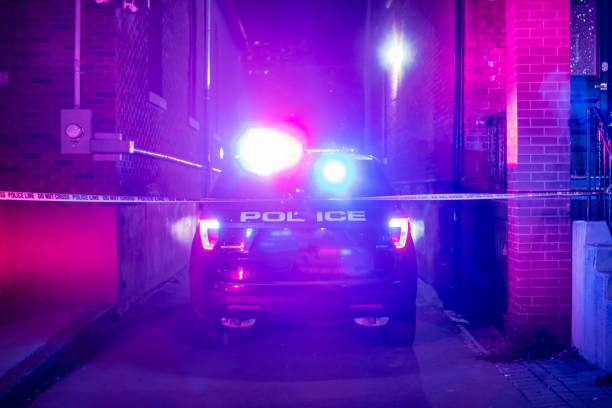In the quiet early hours of Thursday, July 3, 2025, the serenity of Cleveland’s Euclid Beach Park shattered under the crack of gunfire. By the time the sun had risen over Lake Erie, tragedy had already taken its place along the shoreline: 20-year-old Jarvis Perryman, a young man from Brooklyn, Ohio, lay dead. Another young person had been wounded. And a city already weary from violence was once again plunged into mourning.
At 12:40 a.m., Cleveland Metroparks police received a report of shots fired among a group of young people gathered at 16301 Lakeshore Blvd., the address of the beloved Euclid Beach Park. Officers arriving on the scene found Perryman and a second unidentified victim suffering from gunshot wounds. Both were rushed to nearby hospitals. Perryman would not survive.
The Cuyahoga County Medical Examiner’s Office confirmed Perryman’s identity later that morning. Authorities have released few details about the second victim or their condition, and by Thursday afternoon, no suspects had been named or arrested. Investigators remained on site into the morning hours, cordoning off the area and gathering evidence from what had moments before been a setting of summer night calm.
Euclid Beach reopened around noon, but the community had little appetite for leisure. Instead, residents, friends, and family of the victims demanded answers. The location—a historic lakeside park once known for family gatherings and scenic sunsets—had become the site of Cleveland’s second fatal Metroparks shooting in less than a month.
On June 11, just 22 days earlier, 25-year-old Kiara Jackson was shot and killed near the Mill Creek Falls entrance at Warner and Turney Roads. Her accused killer, Lavia Paul, 23, of Cleveland, was arrested and charged with murder. At the time, Metroparks police called the incident isolated, promising increased patrols and community engagement. And yet, with Perryman’s death, concerns over park security and youth violence have returned with new urgency.
A Pattern in Public Spaces
The fact that both killings occurred in Cleveland Metroparks properties, spaces traditionally considered low-crime, has heightened public anxiety. Metroparks police are now facing difficult questions: Were measures taken after Jackson’s death sufficient? Are patrol levels, lighting, surveillance, and intervention services adequate to meet the rising risks?
Witnesses to the Euclid Beach shooting reported hearing multiple shots, but there has been no confirmation on whether Perryman was the intended target or an innocent bystander caught in crossfire. Investigators are pursuing several leads, including potential disputes among attendees and retaliatory violence, though no motive has been officially released.
What is confirmed is that a group of young people had gathered at the park, an all-too-common summer scene. For many teens and early-twenty-somethings in Cleveland, parks are one of the few safe, accessible spaces to socialize, especially late at night. But in the wake of two fatal incidents, that presumption of safety has been deeply shaken.
Community and Family Reeling
Little has been made public about Jarvis Perryman’s life—his aspirations, his relationships, his place in his community. Yet, for the people who knew him, the news of his death was a seismic blow. Friends took to social media to share memories and anger, calling for justice and remembrance.
The identity of the second victim remains undisclosed, pending family notification and medical clearance. Officials have not stated whether the second individual has offered witness testimony or whether that person was acquainted with Perryman.
Escalating Youth Violence in Cleveland
Cleveland has not been immune to the national trend of escalating youth-involved shootings. According to police data, gun violence incidents involving victims or suspects aged 16 to 25 have steadily increased over the past three years. Local leaders cite a combination of economic strain, lack of after-hours programming, and social media-fueled conflicts as contributing factors.
The back-to-back Metroparks shootings underscore a broader reality: violence has begun to claim more neutral, public spaces. Locations once reserved for recreation and peace are now punctuated by yellow tape, sirens, and grieving families.
Systemic Gaps and the Role of Metroparks Police
While the Cleveland Division of Police maintains primary jurisdiction in most city areas, Metroparks Police are tasked with securing an expansive network of parklands. With limited manpower and budgets, questions have emerged about whether they can adequately patrol high-traffic spaces, especially during peak hours of youth congregation.
After Kiara Jackson’s killing, Metroparks Police pledged reforms and partnership expansions. But Perryman’s death now casts doubt on the scope and implementation of those changes. A full timeline of officer response, surveillance camera review, and community communication has yet to be disclosed.
The Cost of Delay
Perhaps the most chilling aspect of the Euclid Beach case is its ambiguity. With no suspect descriptions and no confirmed arrests, the community is left in suspense—and fear.
Witness cooperation could prove vital. Authorities are urging anyone with information to come forward, promising anonymity and protection. But in communities already weary of law enforcement and cynical about justice, cooperation is far from guaranteed.
A City Mourns, Again
As the summer continues, and more youth gather in Cleveland’s public spaces, the memory of Jarvis Perryman and Kiara Jackson lingers. Their lives, cut short in the spaces where joy should reign, are a reminder of what is at stake.
No statement, press release, or patrol car can bring Perryman back. But how Cleveland responds now—through policy, community support, and systemic action—will determine whether these parks remain spaces for gathering or become yet more memorial grounds.
As of this writing, the investigation into Perryman’s death remains open and active. The community waits. The families grieve. And a city asks: what more must happen before public spaces are truly safe again?

